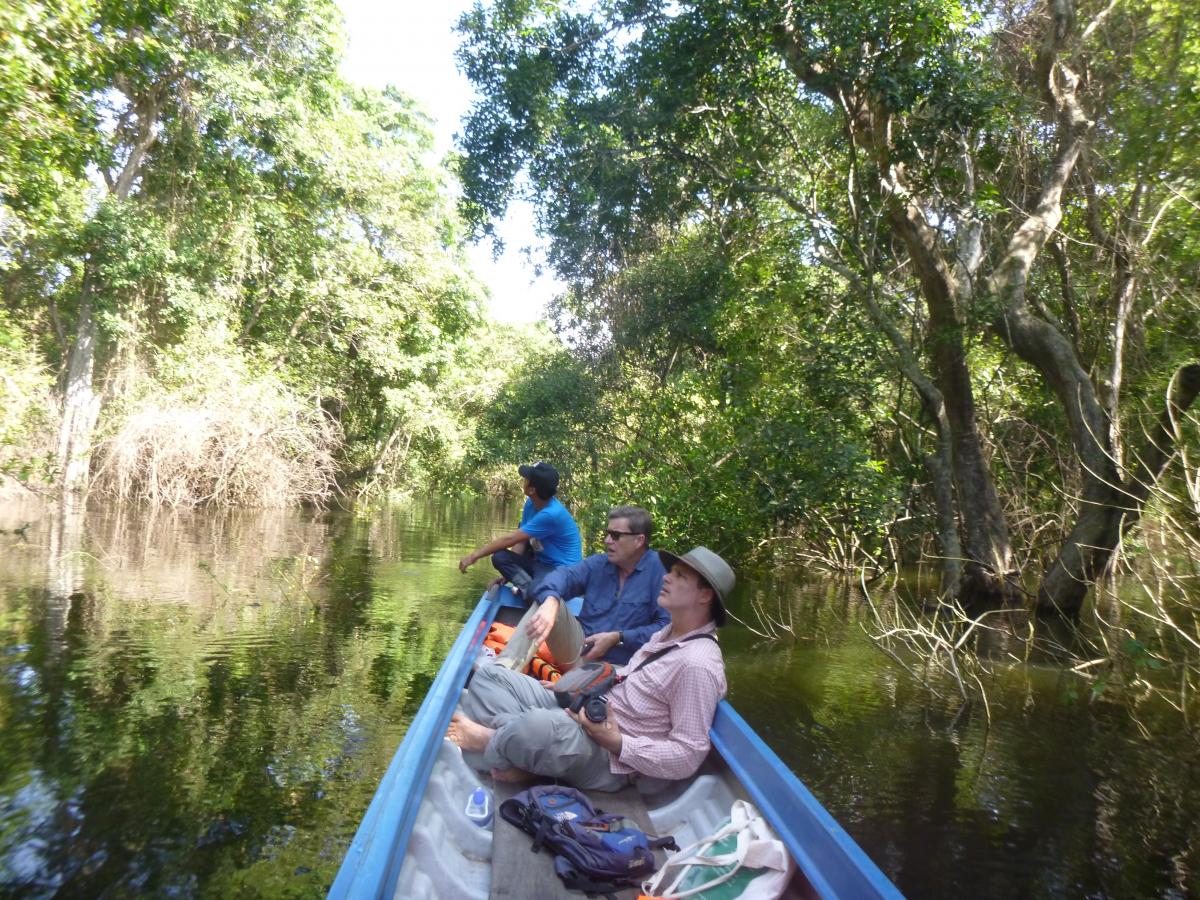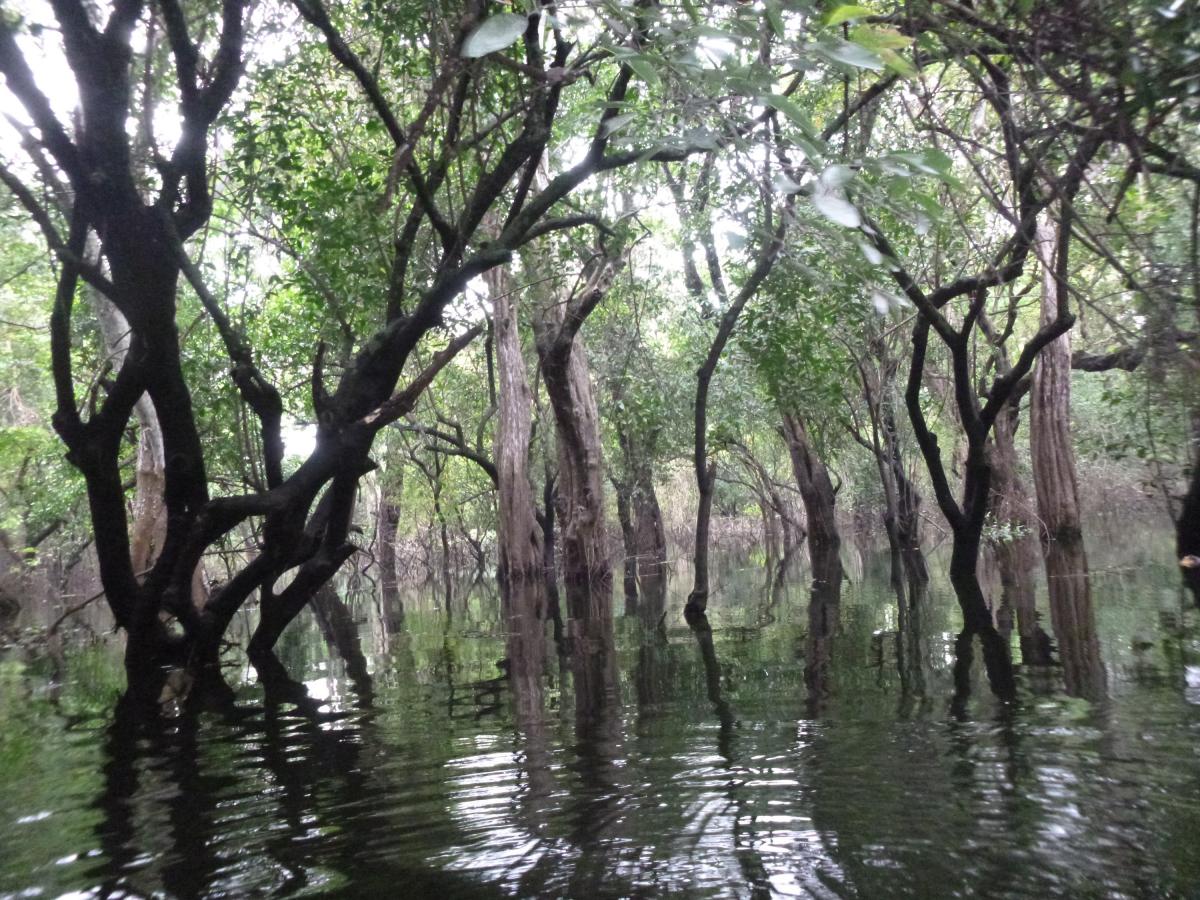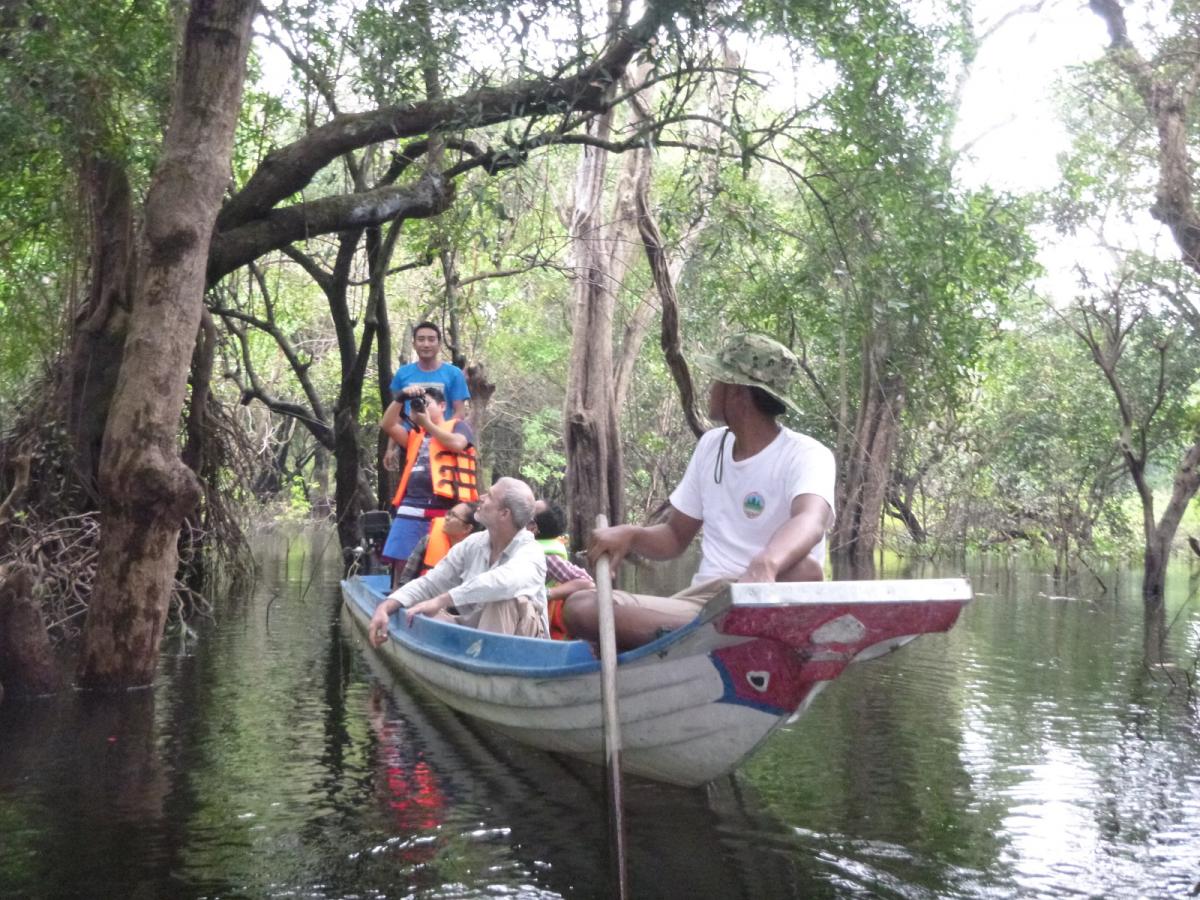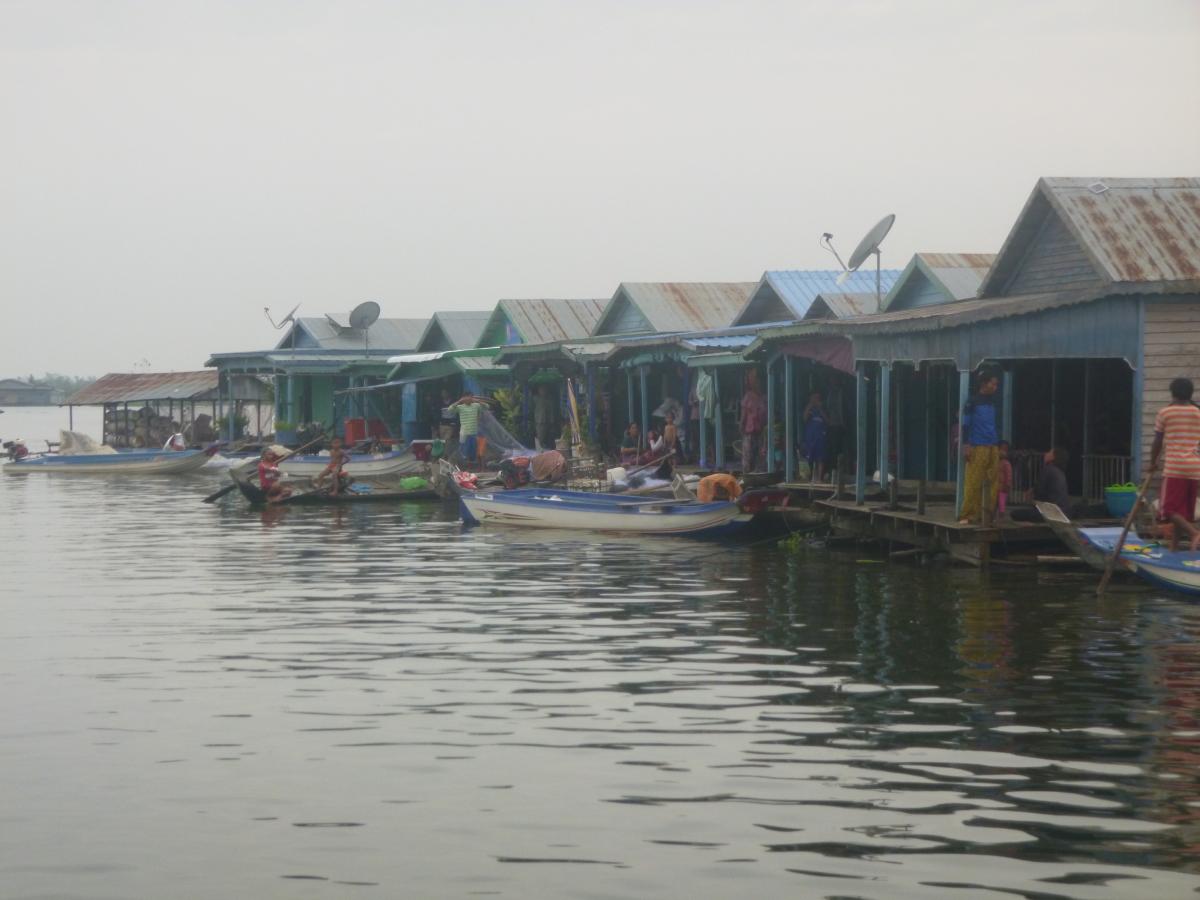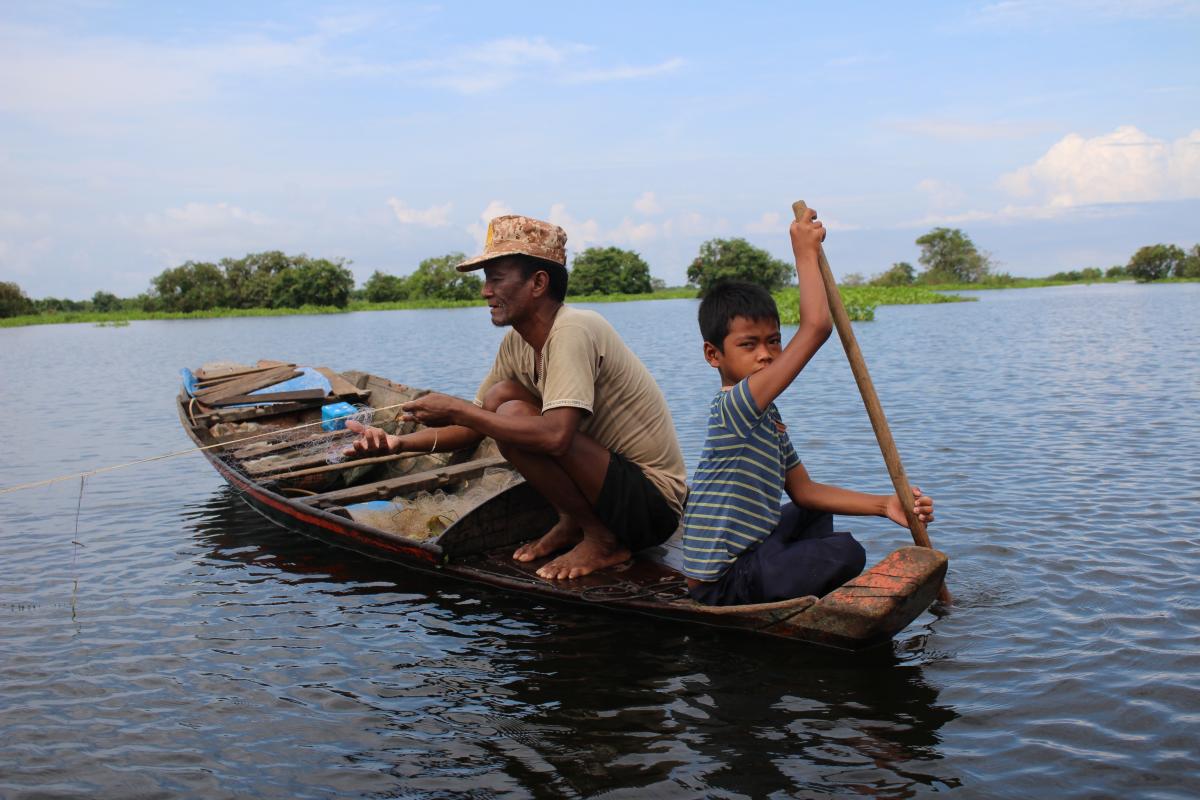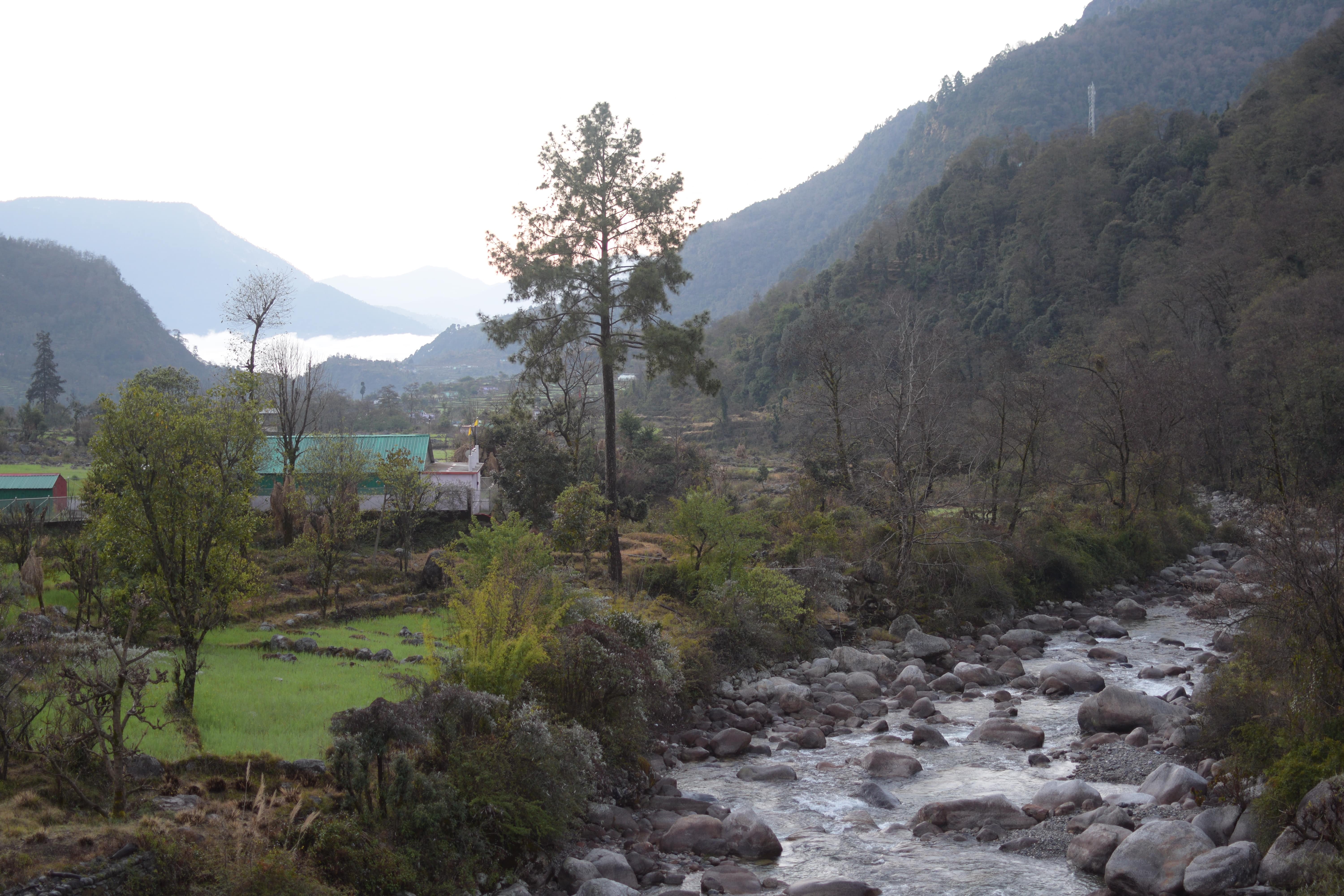Tapping into sustainable tourism to safeguard biodiversity
As the sun rises and the flooded forests of Cambodia’s Stung Seng wildlife sanctuary come alive with the chattering and whooping of endangered monkeys with their elegant silvery-grey fur, fishermen from the Phat Sanday commune make their way towards the lake to set their nets for the day.
Located in the Tonle Sap biosphere reserve, the unique wetlands ecosystem of Stung Seng provides food and shelter for a number of species and acts as an important fish nursery. Surrounding floating village communities are also dependent on the wetland’s lakes and trees for clean water, fish, wood, fruits and nuts for their survival.
Unfortunately, in recent years, illegal fishing, overfishing, hunting and forest exploitation have been threatening the health of this vibrant forest. With more than 90% of the commune population relying on fishing, the catch in the lake has been declining.
To combat this, sustainable tourism - where neither the natural environment nor the socio-cultural fabric of the host communities should be impaired by the arrival of tourists - has been introduced to the commune. By providing an alternative source of income, a responsible tourism plan in Phat Sanday is a means of conserving the environment and enhancing the livelihoods of local people.
“Some villagers, especially the youth, move to the city and neighbouring countries to find jobs because there aren’t many available here,” says Mr Leng Sok, a commune council member of Phat Sanday. “Sustainable tourism can help generate income for people who are providing boat, food and accommodation services to tourists. To attract more tourists, our natural resources will need to be protected and sustainably managed.”
Funded by the Critical Ecosystem Partnership Fund (CEPF) and implemented by Wild Cambodia Organisation, the project that Mr Leng is part of emphasises the importance of using participatory approaches to involve villagers in the development and implementation of a ‘responsible tourism master plan.’ The involvement of villagers in the plans not only allows them to contribute their traditional knowledge on their surrounding environments, but also empowers them to take ownership of environmental conservation and their own livelihood enhancement.
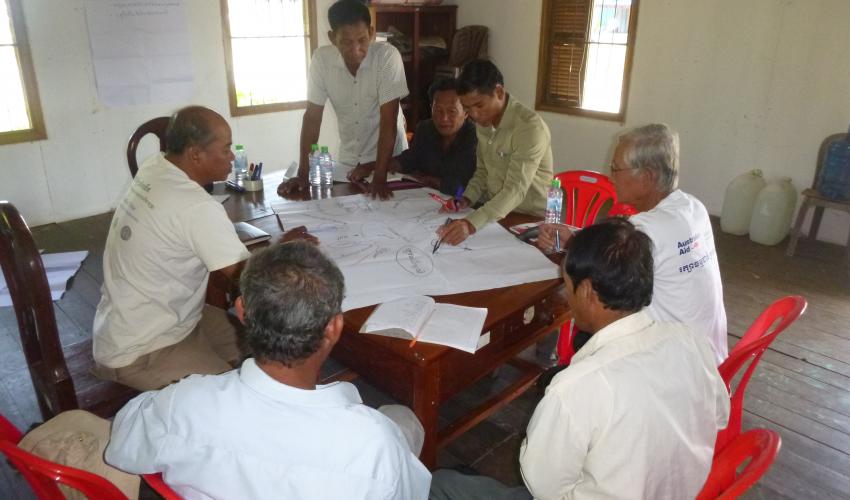 Photo: Consultation meeting with local tourism working group © Wild Cambodia Organisation
Photo: Consultation meeting with local tourism working group © Wild Cambodia Organisation
“When tourism is fully developed, many tourists will come to visit our community and people in our commune will be able to earn more money. To provide good services, we need to train local people in hospitality, especially in activities such as cooking, operating boats, guiding tours etc. This requires a sustainable funding stream. As agreed in our workshops, we plan to use the profit generated from tourism to support conservation activities and commune development. This includes education, health and infrastructure,” said Mr Khoeung, leader of the Phat Sanday Community Protected Area.
This year's theme for International Day for Biological Diversity is “Biodiversity and Tourism”.
As reflected in the Cambodian project above, attractive landscapes and rich biodiversity are of great importance to tourism economies. The protected areas of South and Southeast Asia are particularly important for tourism and are drawing an increasingly large number of domestic and international visitors. The total contribution of tourism to the gross domestic product in the Asia-Pacific region was approximately US $2,270 billion in 2016, and approximately 159 million people in the Asia-Pacific region are working in jobs related to the tourism sector.
Tourism also relates to many of the 20 Aichi Biodiversity Targets. Some focus on reducing damage to biodiversity from tourism, while others focus on pursuing positive contributions of tourism through community engagement and raising awareness for biodiversity, protected areas and habitat restoration.
Recognising the importance of tourism in biodiversity conservation, many programmes and organisations are already working with local communities to ensure that tourism not only benefits the economy but also the environment.
CEPF, for example, has supported a number of sustainable tourism projects in the Indo-Burma region since 2008. Some of the projects train local tour guides in ecotourism while others provide support in the development of policies for sustainable tourism.
Another grant-making mechanism, Mangroves for the Future (MFF), a partnership-based coastal programme co-chaired by IUCN and UNDP, has been supporting over 30 projects that focus on sustainable tourism development, since 2007. In India, the Grande & Bat Island ecosystem project assessed and analysed tourism-related threats to the island’s marine ecosystem. The project also trained 40 tour-boat operators on implementing sustainable practices for dolphin watching.
While tourism benefits local communities - both economically and socially- the natural environment cannot be sacrificed in the process. Tourism must be practised responsibly and sustainably, so as to ensure that the biodiversity and species that are critical for maintaining balance in ecosystems are safeguarded.
As a step in achieving this, local and national governments, tourism industries, businesses and local communities need to work together, as part of an inclusive and participatory process, to design the vision and way forward for a sustainable future.
Founded in 2000, the Critical Ecosystem Partnership Fund is a global leader in enabling civil society to participate in and benefit from conserving some of the world’s most critical ecosystems by providing grants for organisations to help protect biodiversity hotspots, Earth’s most biologically rich yet threatened areas. CEPF is a joint initiative of l'Agence Française de Développement, Conservation International (IUCN Member), the European Union, the Global Environment Facility, the Government of Japan (IUCN State Member), the MacArthur Foundation and the World Bank.
IUCN is leading the second phase of CEPF's work in the Indo-Burma hotspot, working together with the Myanmar Environment Rehabilitation-conservation Network (MERN) and Kadoorie Farm and Botanic Garden (KFBG) to form the CEPF Regional Implementation Team (RIT).
Mangroves for the Future (MFF) is a partnership-based regional initiative which promotes investment in coastal ecosystem conservation for sustainable development. MFF focuses on the role that healthy, well-managed coastal ecosystems play in building the resilience of ecosystem-dependent coastal communities in Bangladesh, Cambodia, India, Indonesia, Maldives, Myanmar, Pakistan, Seychelles, Sri Lanka, Thailand and Viet Nam. The initiative uses mangroves as a flagship ecosystem, but MFF is inclusive of all types of coastal ecosystem, such as coral reefs, estuaries, lagoons, sandy beaches, sea grasses and wetlands. MFF is co-chaired by IUCN and UNDP, and is funded by Danida, Norad, and Sida and the Royal Norwegian Embassy in Thailand.
